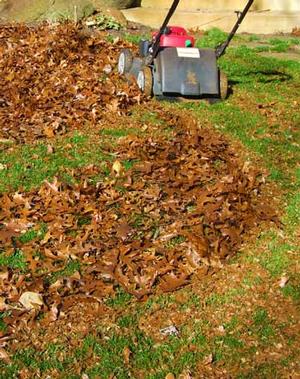The leaves of fall are one of nature’s most gorgeous gifts but I find that I appreciate them even more after they have fallen off the trees. Yes, I said after. While I don’t look forward to the work of cleaning up the leaves any more than you do, I have a very deep appreciation for what they will mean to my lawn and garden a few months from now.
Where most people see fallen leaves as hours of raking, hauling and bagging, I see them as some of the best and most cost effective lawn fertilizer and garden bed mulch. Leaves contain a lot of the nutrients the trees extract from the earth before they fall to the ground. I will use them to replenish the lawn and garden soil and nourish all that grows within. It’s an organic fertilizer, multi-vitamin and soil conditioner all-in-one and it’s free.
The easiest way to get rid of leaves on the lawn is mow them. Sometimes it might take a couple extra passes to get the leaves into very small pieces but it sure beats raking. By spring, there is no remaining evidence that there’ve been any leaves mulched into the yard. I also collect them in my bagger and then distribute them throughout my garden beds. As the shredded leaves decompose, they will act as a natural fertilizer and weed control agent. You should also till some leaves into your vegetable garden. By Spring, they’ll decay into rich humus which will help feed the crops you plant and improve the structure of the soil.
A few strategies worth mentioning… When the leaf fall gets too thick and you feel like you can’t keep up, just keep mulching. If it’s then too thick on the lawn, go over it with the bagger attached. These are the leaves I use as mulch in my garden beds or till into my vegetable garden. Always try to mulch before it rains. It is much easier to mulch dry leaves. If the leaves get wet, it is best to wait for them to dry.


